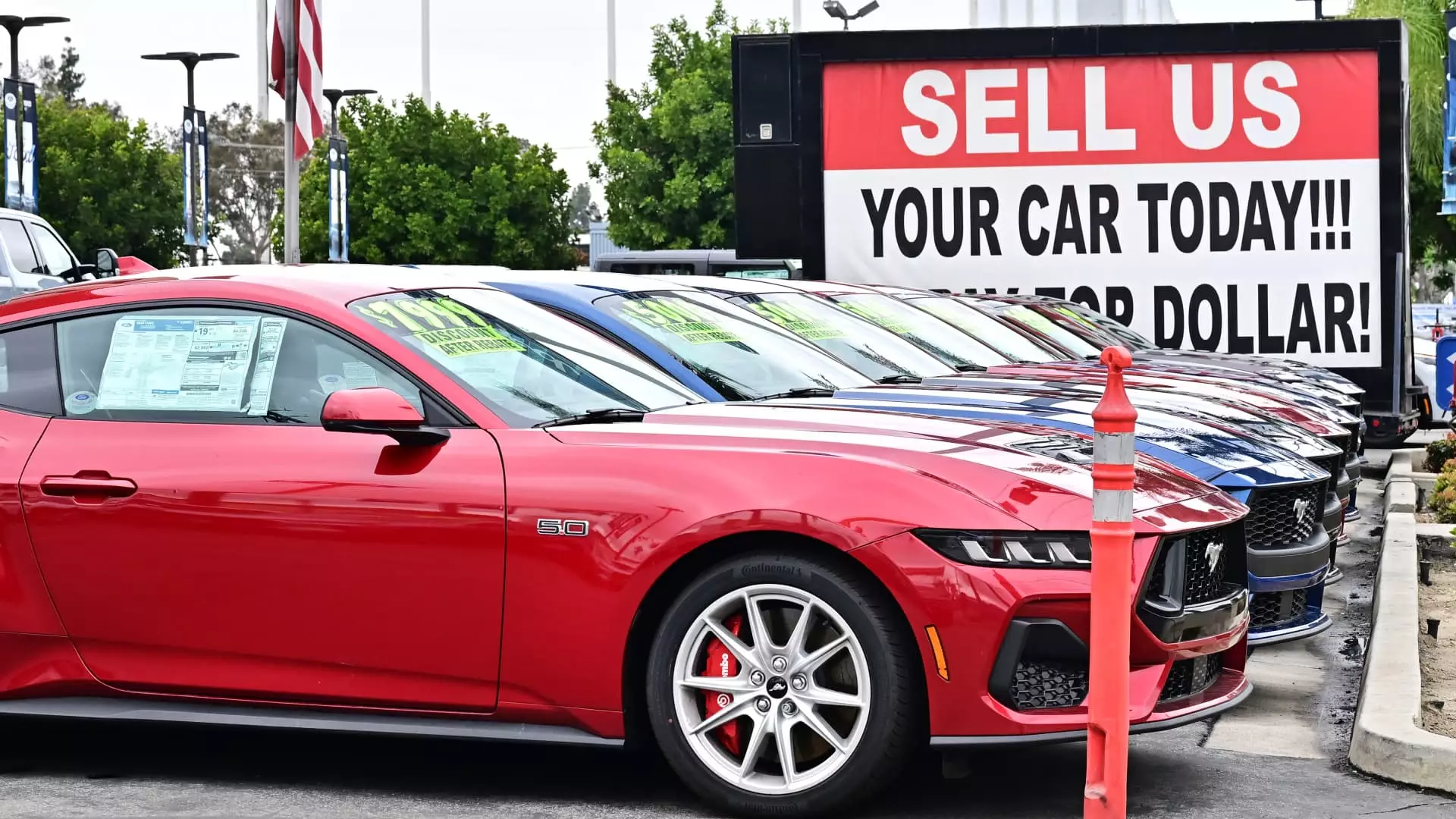In the car market, few dynamics are as volatile as those dictating the prices of used vehicles. As of May, a notable decline in prices marks a significant shift, driven largely by fear and anticipation around tariffs. When President Trump imposed a 25% tariff on new imported vehicles, consumers, concerned about future price hikes, rushed to secure preowned cars. The result was a surge in demand that temporarily inflated prices, but as the immediate panic subsided, we now see a sobering correction in the market—a 1.5% decrease from April to May—albeit still 4% higher than the previous year.
This fluctuation offers a pivotal lesson about consumer behavior in politically charged environments. While the tariffs were intended to protect domestic production, they inadvertently destabilized the market by prompting consumers to act on impulse. The demand for used vehicles surged, but as anxiety over pricing came down, prices began to stabilize, revealing that much of the previously inflated value was speculative. This nuance lays bare an uncomfortable truth: the underlying economic system is deeply intertwined with political maneuvers, affecting ordinary people’s purchasing capabilities.
Inventory Drought and the Human Cost
Compounding current issues, we must confront another grim reality: inventory levels for used cars stand at a meager 2.2 million—historically low numbers. The impacts of the pandemic are still felt, with consumers hanging onto their vehicles longer and facing a burgeoning gap in production. So what does this mean for the average American consumer? It signals a tough road ahead. Fixed and high rental prices constrain many from the car-buying process, while compounded concerns over future production and economic uncertainty loom large.
The hesitance of consumers to invest in used vehicles also reflects a broader malaise affecting many sectors. It’s not just about wanting a car—it’s about security, stability, and maintaining a semblance of control amid a chaotic global economic landscape. The decline in retail sales of used vehicles by 3% in May hints at a market that has crossed a threshold of desperation. Buyers may still hold on to their dreams of car ownership, but economic unease makes that dream increasingly unattainable.
Market Stabilization or Hazardous Foresight?
One cannot overlook the long-term implications of the ongoing shifts in the used car market. While prices may be leveling off now, the trajectory indicates a degree of volatility that could easily return with the next geopolitical crisis or supply chain disruption. Cox Automotive’s findings that used vehicle prices are finally beginning to stabilize should be approached with a healthy dose of skepticism. This process is not merely a return to normalcy; it’s a precarious balancing act, one where buyers are forced to tread carefully lest they encounter another abrupt shift in prices.
In essence, the current landscape is far from reassuring. The accelerating need to stabilize used car prices and the increasing pressure on consumers to adapt begs for critical attention. Until political realities and economic fundamentals find a more stable equilibrium, the used car market will remain a barometer of consumer uncertainty—a realm where buyers must stay vigilant, informed, and prepared for the unexpected.

